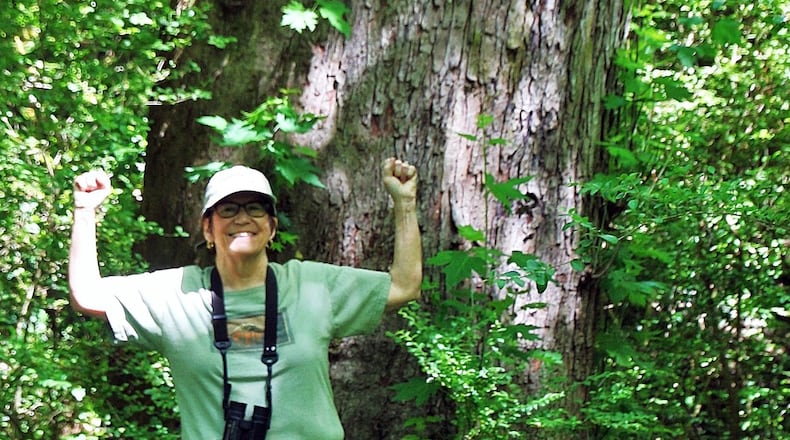Two hundred years ago, a great virgin forest covered the land that we now know as Atlanta. In 1821, the Creek Indians ceded the land to the U.S. government, and within three decades after that transfer of ownership, huge tracts of the forest had been cleared for cotton and other crops.
As Atlanta developed into a bustling metropolis, most of its remaining virgin forest was cut down. The city became a poster child for urban sprawl.
Fortunately, along the way, several pockets of the original forest were spared the axe, chainsaw and bulldozer. Most of them were on floodplains, in rocky areas or on steep slopes, locations that were considered un-buildable as Atlanta expanded.
Today, Atlanta harbors scattered remnants of old-growth forests that have attained great age without significant disturbance. One example is 34-acre Herbert Taylor Park and adjoining Daniel Johnson Nature Preserve in Midtown's Morningside neighborhood. Breathtaking are its huge beech, loblolly pine, tulip and maple trees.
Not only are the old-growth forests places of natural splendor, they also help control storm runoff, clean the air of pollution and provide habitat for a wide array of native plants and animals, noted Kathryn Kolb, head of EcoAddendum, a group dedicated to raising awareness of Georgia's natural environment.
Her group and several others are dedicated to identifying and protecting old-growth forests around Atlanta. At a recent event she helped organize at Emory Univeristy, more than 300 people showed up to celebrate the city’s old-growth remnants.
During the event, Joan Maloof, founder of the Maryland-based Old-Growth Forest Network, inducted 14 of Atlanta’s old-growth forests into the network, conferring upon them national recognition.
IN THE SKY: From David Dundee, Tellus Science Museum astronomer: The moon will be full on Wednesday — the "Planting Moon," as the Cherokee people called May's full moon. Mercury and Venus are low in the east just before dawn. Mars is very low in the west at sunset. Jupiter is high in the east around dusk and will appear near the moon Sunday night. Saturn rises in the east just after sunset. The Eta Aquarid meteor shower will be visible all weekend — in the southeast from about 3 a.m. until dawn.
Atlanta forests inducted into the National Old-Growth Forest Network.
- Briarlake Forest and Hidden Acres Nature Preserve, DeKalb County
- Cascade Springs Nature Preserve, Atlanta
- Herbert Taylor Park/Daniel Johnson Nature Preserve, Atlanta
- D'Agnese tract, Atlanta
- Cumberlander Park, Atlanta
- Deepdene Park, DeKalb County
- Fernbank Forest, DeKalb County
- Herbert Greene Park, Atlanta
- Lionel Hampton-Beecher Hills Nature Preserve, Atlanta
- Lullwater Conservation Garden, Atlanta
- Osborne Park, Brookhaven
- Outdoor Activities Center, Atlanta
- McConaughey Nature Preserve and Historic Site, DeKalb County (privately owned)
- Mosman Forest, Atlanta, Fulton County (privately owned)
About the Author
Keep Reading
The Latest
Featured



